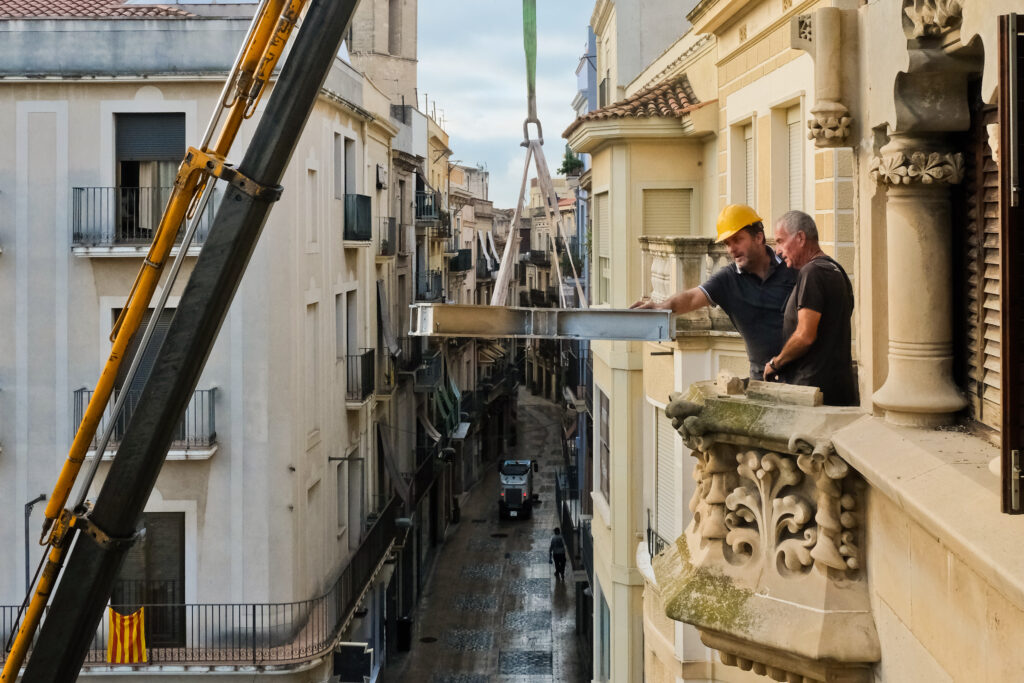Casa Navàs in Reus has officially begun the long-awaited reconstruction of its original tower, which was destroyed in 1938 during the Spanish Civil War. The entire reconstruction is funded by the business group MaserGrup, and the new tower is expected to be completed during the first quarter of 2026. This week, workers have begun installing the scaffolding required to raise the new structure, restoring the silhouette envisioned by architect Lluís Domènech i Montaner at the beginning of the 20th century.
After the restoration of the frontispiece in 2020, the owners committed to completing the reconstruction of the façade and re-erecting the tower that once crowned the corner between Carrer de Jesús and Plaça del Mercadal. Over recent weeks, artisans have been preparing stone blocks, stained glass and forged iron pieces that the construction company Constècnia will now start installing, following the technical design by architects Joan Tous and Pau Jansà.
During the last week of August, scaffolding began to rise around the building to allow for the placement of a stainless-steel structural frame, required by current safety regulations and not present in the original tower. This structure will be anchored to the building, a process that will require partially dismantling the existing roof.
Once the metal skeleton is secured, handcrafted stone blocks carved by master stonemason Florenci Andreazini will be installed. The stone, sourced from Vinaixa, is the same type used by Domènech i Montaner. Initially, assembling the entire tower within Constècnia’s workshop was considered, but the millimetric precision required led to assembling it only partially off-site and completing the construction directly on the building.
In the following stages, stained glass crafted by master glazier Joan Serra Renom (L’Art del Vitrall, Sabadell) will be installed, and the reconstruction will be completed with forged-iron elements created by Marc Herrero Baró, including the replica of the ship of Jaume I that will crown the tower. The original ship will be preserved as a museum piece due to its fragile condition.
Since almost no original elements survived, the reconstruction uses newly crafted materials based closely on historical photographs and documentation. Although the technical complexity has delayed the project, it will ensure a precise and faithful restoration.
With this reconstruction, Casa Navàs is one step closer to recovering its full original Modernista appearance and strengthening the cultural heritage of Reus.





